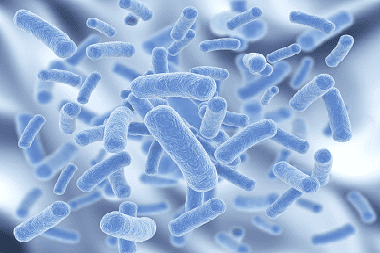Infectious diseases >>>> Pseudotuberculosis - symptoms and treatment
Pseudotuberculosis - symptoms and treatment.

Pseudotuberculosis (synonym: yersiniosis) is an acute infectious anthropozoonotic disease with a diverse manifestation of symptoms. The causative agent of pseudotuberculosis is Yersinia pseudotuberculosis. Carriers of infection that are dangerous to humans are rodents, which infect water, soil, food with their secretions. The causative agent of pseudotuberculosis gets to a person with food, for this reason the bacterium mainly affects the gastrointestinal tract (as well as the skin, lungs and musculoskeletal system).
The risk of developing the disease pseudotuberculosis is associated with eating food that has not undergone heat treatment by boiling, in which the bacterium Yersinia pseudotuberculosis dies within one minute. These types of products include leafy salads, vegetable salads, which are usually eaten without heat treatment; dairy products that have not been pasteurized, boiled, sterilized; water collected for drinking from open reservoirs and not boiled.
The incubation period for the development of pseudotuberculosis can range from three days to three weeks, but on average it takes about ten days. The disease is acute without a prodromal period, begins with chills, fever, is accompanied by muscle pain, headache, and general disturbance of well-being. Signs typical for pseudotuberculosis are disorders of the gastrointestinal tract (diarrhea, nausea, vomiting, various localization of abdominal pain). The skin of the face looks edematous, hyperemic. There may be swelling and redness of the hands and feet, redness of the conjunctiva of the eyelids, eyeballs, hyperemia of the oral mucosa. On the 1st-6th day, a scarlet fever-like rash appears on the skin, some elements of the rash resemble a hemorrhagic rash. The rash can last up to several days and disappear without a trace.
.If the musculoskeletal system is involved in the process of the disease, then the joints of the limbs swell, causing a painful symptom and complicating the movement of the limbs. If pseudotuberculosis has taken on a generalized course, then symptoms of damage to the liver and spleen are observed (an increase in the liver and spleen in volume). In addition to the symptoms described, in the generalized form, signs of catarrhal phenomena (perspiration, cough, rhinitis), pneumonia, serous meningitis, pyelonephritis, and secondary hepatitis appear.
Diagnosis of pseudotuberculosis is carried out on the basis of the analysis of washings from the throat, the study of sputum for the presence of the pathogen.
Treatment of pseudotuberculosis is carried out using etiotropic therapy, selectively affecting the causative agent of the infection. For these purposes, antimicrobial drugs from the category of fluoroquinols and antibiotics are used. According to indications, detoxification measures, anti-inflammatory therapy are carried out, antihistamines are used. Probiotics are used to maintain intestinal biocenosis. They choose a gentle diet to restore the work of the gastrointestinal tract.

Read

Read



























